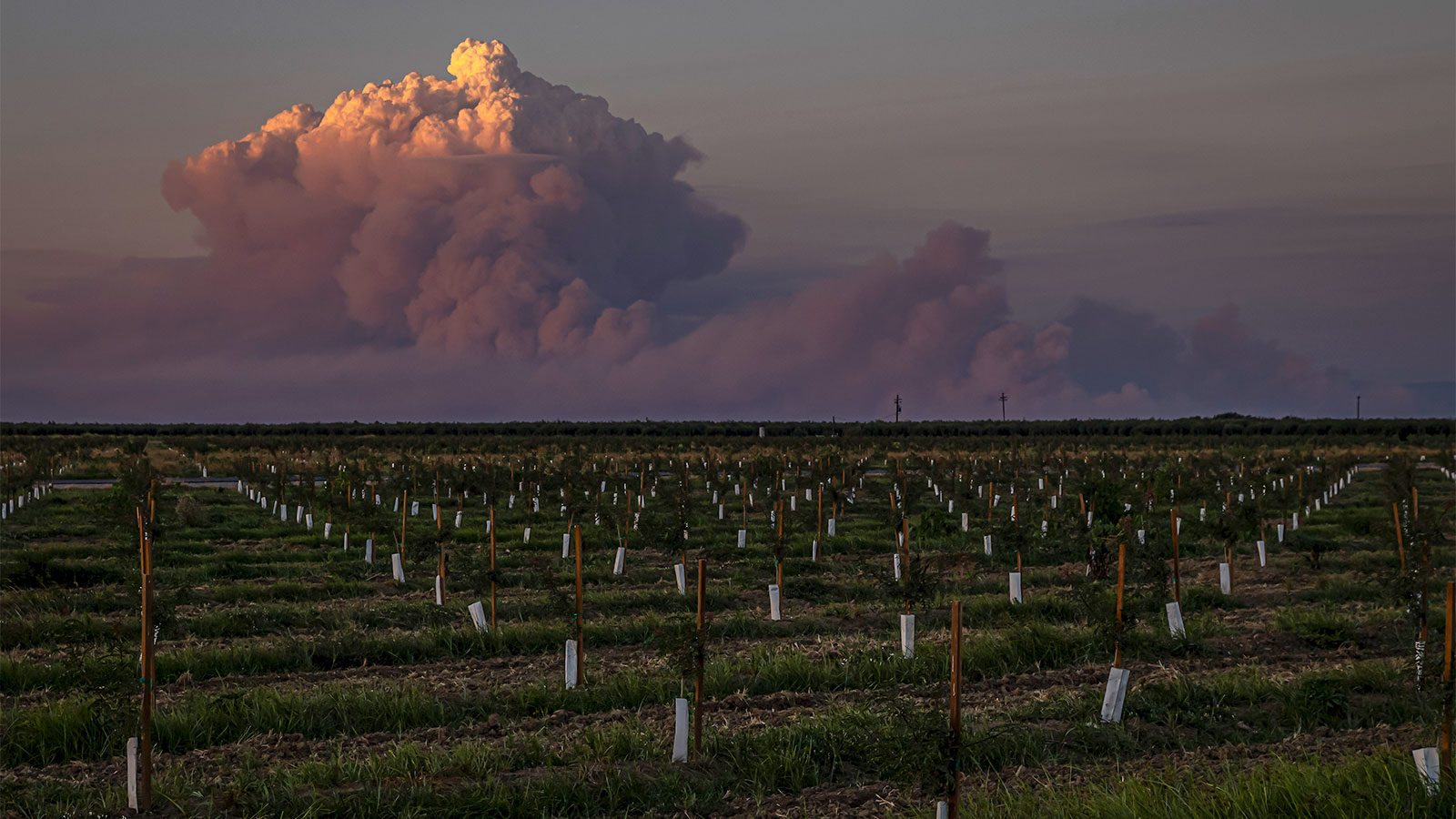With 600 square miles burned so far, the Park Fire is already one of California’s biggest wildfires ever — and it’s still far from contained. Driven by strong winds, the blaze has chewed through desiccated plants, spewing smoke high into the atmosphere. So much smoke and rising hot air, in fact, that it’s been creating fire tornados and one of the strangest natural phenomena on earth: the pyrocumulonimbus cloud, or pyroCb.
It’s a smoke thundercloud that makes a dangerous wildfire like the Park Fire, burning in the northern part of the state, even more unpredictable. PyroCbs can produce lightning that goes on to spark more fires around the very blaze that made the clouds. And as the planet warms, pyroCbs seem to be growing more common, since they’re spawned by the biggest, fiercest wildfires, which themselves are getting worse. “PyroCbs are such massive, almost volcanic-like eruptions,” said Rajan Chakrabarty, an aerosol scientist who studies the clouds at Washington University in St. Louis. “These pyroCbs create their own fire weather.”
The Park Fire has grown massive on a diet of extra-dry fuel. This part of California hasn’t burned for decades, so a lot of plant life had built up and desiccated under the summer sun. Very low humidity has helped suck what little moisture remains in the vegetation, turning the landscape into a pile of tinder.
Such a big and intense fire is a breeding ground for pyroCbs — marvels of fire physics. As a blaze like the Park Fire burns — and burns more viciously thanks to climate change producing higher temperatures and drier fuels — the heat from the flames rises, propelling smoke particles tens of thousands of feet into the atmosphere. As the air rises, it cools and expands. Water then condenses on the smoke particles, and the cloud forms.
The masses of rising air in a pyroCb form a sort of void at ground level, which sucks in more air, generating winds that encourage the spread of the flames. The most intense of wildfires consume so much oxygen that they can somewhat smother themselves, but pyroCb winds inject more of the gas into the firestorm. It’s “a self-perpetuating process,” said Daniel Swain, a climate scientist at UCLA and the National Center for Atmospheric Research. “Because the more intense it is, the more oxygen that rushes in, which means the more intense it is, which means the more oxygen rushes in. So you can see how that goes.”
At the same time, a towering pyroCb can create a downdraft, making winds at the surface even more unpredictable. “The convection causes a lot of chaos, so it becomes very hard to predict where air is coming from and moving to,” said Payton Beeler, an atmospheric scientist who studies pyroCbs at the Pacific Northwest National Laboratory in Richland, Washington. That, in turn, leads to chaotic fire behavior, as those winds push the flames across the landscape at different speeds and in different directions.
The smoke from a pyroCb travels well beyond the blaze that spawned it. “Some of the aerosols that get injected into the upper troposphere or lower stratosphere tend to stick around for up to six to eight months,” Beeler said. “And they can get transported across hemispheres, basically.”
The black carbon from a pyroCb cloud isn’t exactly behaving itself up there, either. In a paper published last week in the journal Nature Communications, Beeler found that the black carbon from a pyroCb absorbs up to twice as much visible sunlight as black carbon from smaller fires or from urban sources, like the burning of coal. “Particles in the pyroCb plume tend to have really, really thick coatings of organics,” Beeler said, “and that is distinct from black carbon from other sources.”
That increases light absorption and raises temperatures in the atmosphere. “It is like a black sweater — it absorbs all the sun and warms the vicinity around it,” said Chakrabarty, who coauthored the paper with Beeler.
Why this happens in pyroCb clouds, though, scientists still don’t fully understand. It may be that there’s something distinct about the way a pyroCb-spawning wildfire burns, or that there’s a secondary process going on inside the cloud to coat the particles with more organics. (Organics in this case come from the fire’s combustion of vegetation.)
Another unanswered question is whether pyroCb clouds are already more common due to climate change supercharging wildfires, or whether scientists are getting better at detecting them with satellites, or a combination of the two. PryoCb plumes have been popping up all over the world, from Australia to Siberia, as fuels get drier and temperatures get higher. The monster blazes in Canada this summer have been breeding them, too. “They seem to be happening more frequently,” Beeler said. “Whether that’s a function of warming climate and better identification, I think it’s probably both. But the impacts seem to be very long-lasting and long-ranging.”

